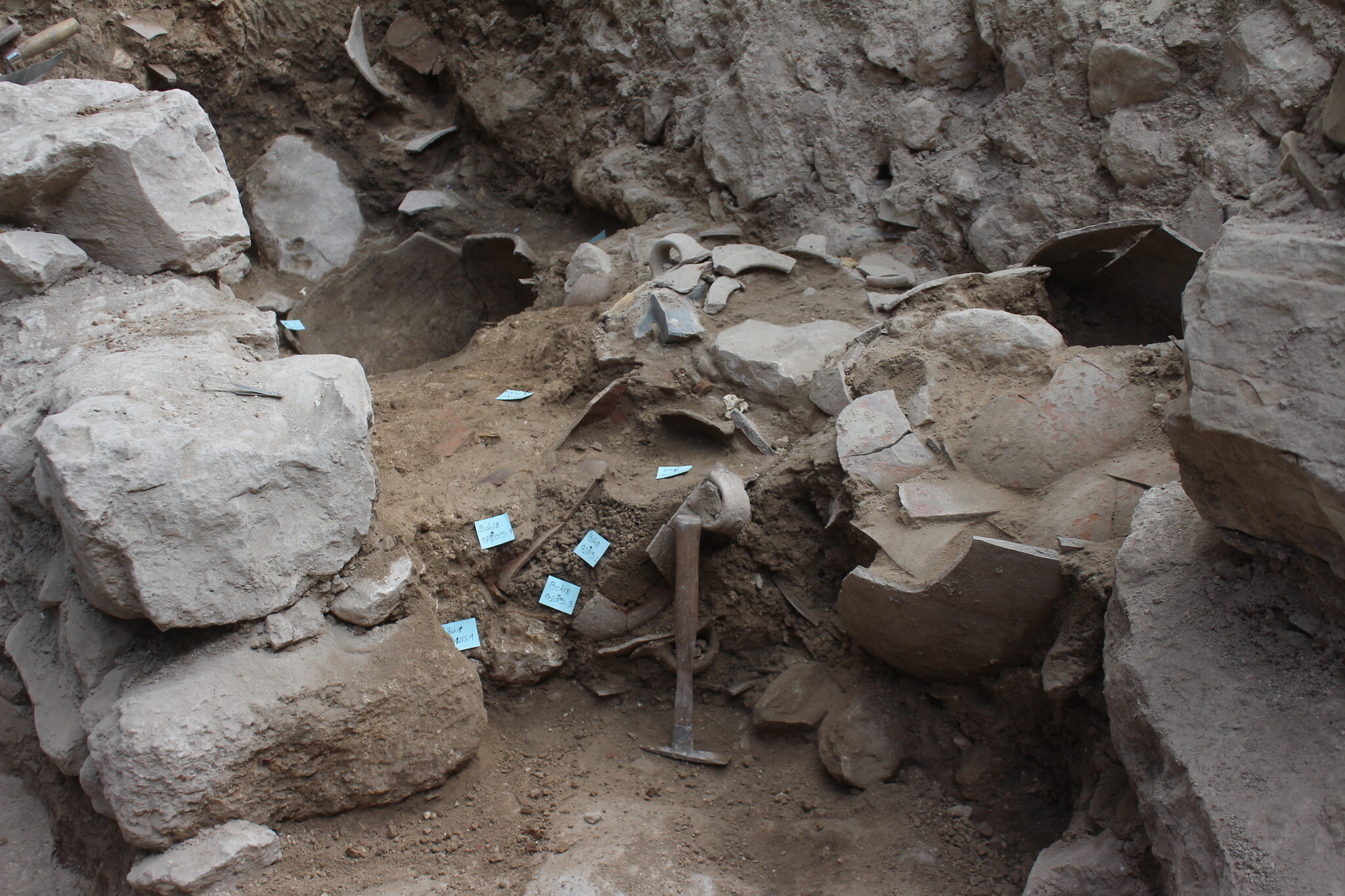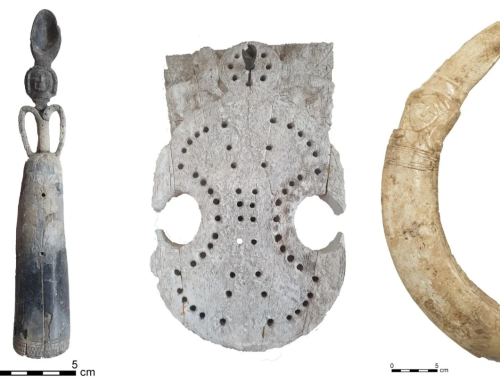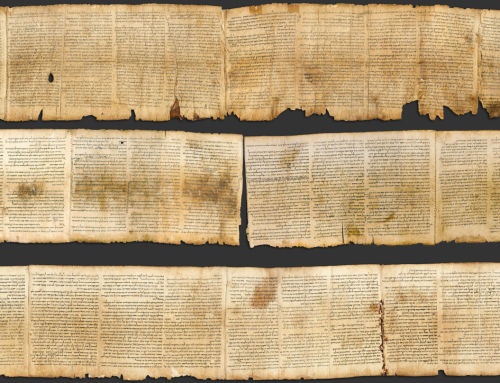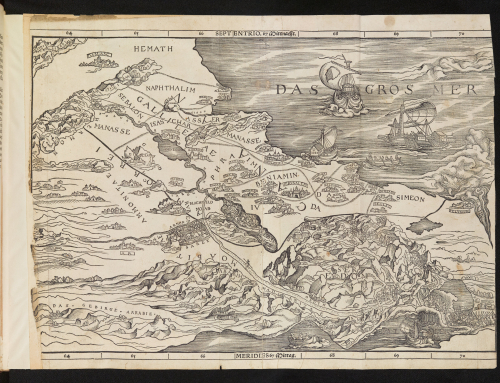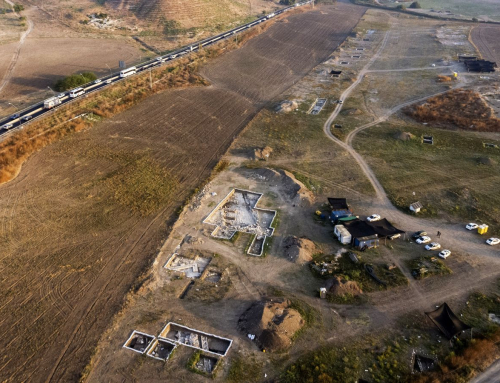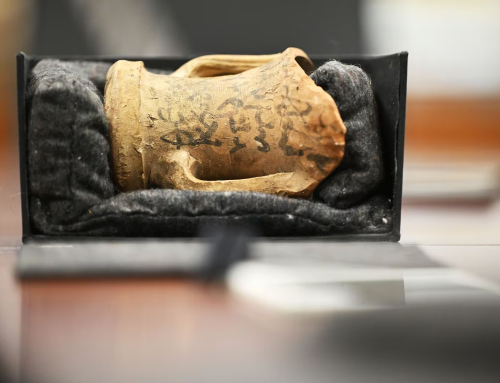A team of scholars recently used a new method to conquer the Hallstatt plateau, an abiding Iron Age puzzle, and help reveal the timeline of ancient Jerusalem. Here’s how they did it
Archaeological insights are usually gleaned from small items revealed through painstaking excavations, research and analysis, each a small piece of a greater puzzle.
This approach was taken to the extreme in a recently published article making waves in the archaeology world in which an interdisciplinary team of Israeli experts employed microarchaeology methodology to gain new insights into Jerusalem’s size — larger than previously thought — and chronology during the Iron Age, which spans roughly the years 1200 to 586 BCE.
Through their vast sampling of securely anchored and scientifically excavated minuscule organic remains, the researchers seem to have solved a longstanding issue around accurate radiocarbon dating during the period — a breakthrough that could have implications for the archaeology field as a whole.
“The resolution of C-14 [radiocarbon dating] was very, very bad… With the work that we have done in the City of David, we succeeded to reach a resolution [that is] less than 10 years, which is really something that is very new and dramatic,” said the Weizmann Institute’s Prof. Elisabetta Boaretto, one of the article’s authors.
The long-term research project was slowly and painstakingly accomplished through precise excavation of minute matter in securely dated strata.
“This was done with little bits of charred seeds,” said Dr. Joe Uziel of the Israel Antiquities Authority (IAA), one of the authors of the paper, during a recent phone call with The Times of Israel. “This research is basically the endpoint of about 10 years of intensive study. This was a long, long research project.”
The paper, “Radiocarbon chronology of Iron Age Jerusalem reveals calibration offsets and architectural developments,” was published in April in PNAS, the peer-reviewed journal of the National Academy of Sciences. It was written by a research team from the Weizmann Institute of Science, the Israel Antiquities Authority and Tel Aviv University.
The “charred seeds” Uziel referred to formed a significant part of the more than 100 tiny biological samples carefully gathered in situ from different urban strata in ancient Jerusalem by the research team, a key part of the methodology.
These samples were then analyzed in Boaretto’s lab in the Weizmann Institute of Science’s Dangoor Research Accelerator Mass Spectrometry Laboratory (D-REAMS), a particle accelerator used for hyper-accurate radiocarbon dating, also known as carbon-14 or C-14 dating.
Carbon-14 dating allows for the measurement of a decaying radioactive isotope of carbon. Since it is present in all living things on Earth, the decay rate can usually determine the approximate age of a sampled piece of biological matter. However, during the so-called Hallstatt plateau — a period from approximately 770 to 420 BCE — samples return “multiple dating solutions and very wide calibrated ranges,” as the authors note in their paper.
This phenomenon has long vexed archaeologists working in the period as it renders accurate radiocarbon dating of samples from those years nearly impossible. Even using the advanced D-REAMS accelerator, samples from the plateau period produce C-14 dating results with a high range of variability, with samples sometimes returning multiple dates differing by hundreds of years.
The Hallstatt plateau is likely the result of “astronomical effects in the production of C-14 in the atmosphere which caused changes in the isotopes and how they appear in organic matter,” Uziel said.
However, the researchers found they could narrow down the variations, eliminate improbable results and eventually develop a more accurate timeline by carefully comparing those inconclusive results with other verifiable dating methodologies — such as pottery shard dating, architectural data or specific, known events that left a mark in the archaeological record, such as a massive earthquake in 750 BCE and the burning of Jerusalem at the hands of the Babylonians in 586 BCE.
“We didn’t just use C-14 dating. We put this together with very intense field sampling and careful, layer-by-layer excavations, using microarchaeology, taking the other finds and putting them into play,” Uziel said.
Instead of just “sending interesting samples discovered in the field to a separate lab and then receiving the results indicating the likely age,” as is commonly done with C-14 dating, Uziel continued, the provenance of each individual sample was carefully characterized and understood using a precise methodology.
The scientists were able to overcome the Hallstatt plateau, Uziel said, by analyzing a huge number of samples and comparing them with the other dating information, “over and over again, covering a period of several hundred years, with many dates that were in sequence.”
The results were only possible because of the close collaboration between the archaeologists and C-14 dating scientists at Weizmann, Uziel stressed.
“It’s 100 percent the fact that we were working together in the field. There were a lot of discussions to understand how to fine-tune [the process]… it was a constant back and forth, the cooperation between different experts to overcome all these problems,” he said.
End of a long nightmare?
The Hallstatt plateau “has been a nightmare for a long time,” Boaretto said bluntly, reached in her office via Zoom. “If you are working in this period, you must have a lot of strata, and a lot of samples and measurements, not just one. This is what we did here… this is the innovation.”
Boaretto is director of the Kimmel Center for Archaeological Science and head of the D-REAMS accelerator lab, both projects dedicated to using “radiocarbon dating and microarchaeological methods to build high-resolution chronologies of past events” according to the Weizmann website.
The primary author of the recent paper on Jerusalem, Dr. Johanna Regev, also from Weizmann, was “a key person” responsible for “this really excellent work,” Boaretto noted. She also credited Prof. Steve Weiner, former director of the Kimmel Center at Weizmann, for initiating, back in the 1980s, the development of its microarchaeology methodology.
“There are many accelerators around the world that can measure C-14, but to increase precision and accuracy, the measurement also needs to be tailored to the chronological question… We do follow the whole study from the excavation to the laboratory,” she said.
The burnt seeds that were extensively sampled for the project were significant, Boaretto explained, because they give precise concentrations of C-14 for the year they grew. Because they were likely burned during the 586 BCE sacking of Jerusalem, an event that left clear signs in the archaeological record, that date could be used as a reference for the seeds’ C-14 levels, despite, and overriding, the Halstatt plateau.
Additionally, the C-14 dating was further corroborated by comparisons with a master global “calibration curve” of historical C-14 atmospheric data gleaned primarily from sampling tree rings. Trees grow one ring a year, and each ring can be measured for C-14, so scientists have long worked with a constantly updating, worldwide database of tree-ring C-14 levels covering thousands of years.
However, researchers must be aware that the tree-ring data used to compare the C-14 results were drawn from European trees, she said.
Trees in Europe grow their rings from summer to fall, Boaretto said, but “the seeds in Israel grow in the first part of the spring when the C-14 concentration is lower than it is during summer in Europe… There is a difference in the concentration of C-14 between Israel and Europe. These small differences can create a discrepancy of 10-20 years [in dating], very important for these chronologies of historical periods.”
The unexpectedly large percentage of seeds found among the earliest strata also led the researchers to postulate that early Jerusalem of the 10th-12th centuries, considered by some as the time of biblical King David and King Solomon, was more heavily populated, spread out and developed than had previously been assumed.
Further ramifications
Both Boaretto and Uziel agreed that their team’s interdisciplinary dating method could be applied to other locations. They noted, though, that to achieve accurate results the site must have similar scientifically excavated strata and layers of human habitation that can be securely dated using several methods and from which quality samples for C-14 testing can be extracted.
In ancient Jerusalem, the Hallstatt plateau period coincides with epic events from the First Temple era, including the period of Assyrian aggression, the destruction of the Temple at the hands of the Babylonians and the subsequent Jewish exile and displacement.
These events are described in the Hebrew Bible and other sources such as Assyrian and Babylonian records, but the Hallstatt plateau has prevented “fine-tuning” a more precise and accurate dating, archaeologist Uziel said.
For Uziel, the Bible is not a history textbook. It is “a complex text, and in terms of its historical reliability, it is a religious text and doesn’t tell us the exact history. It was edited after the events it describes. At the same time, ignoring it completely doesn’t make sense, because it contains clues.”
An example of this interplay between biblical sources and the results gleaned using a swath of secure microarchaeology sampling and dating is the researchers’ findings on the so-called Broad Wall. Long thought to have been constructed by King Hezekiah as part of city defenses against an Assyrian siege, as written in the biblical book of Chronicles, the new research paper places the wall’s construction decades before, during the time of King Uzziah, who engaged in large-scale construction projects around Jerusalem after a major earthquake.
The biblical text supports both possibilities, but the new, accurate dating methods provide a more likely conclusion for the wall’s origin in just one example of the kind of “fine-tuning” Uziel described.
The veteran archaeologist, an expert on ancient Jerusalem who currently heads the IAA’s Dead Sea Scroll unit, declined to speculate on further mysteries the new methodology might be able to solve in the Holy City or elsewhere. He noted that instead of attempting to answer specific historical questions, the research was focused on showing their methods were viable and the team had “built the questions as we went along.”
“For sure there is more to be done, and for sure there is the next step,” Uziel said. But he said that they would wait for scholarly responses to the paper before pursuing more research.
“You need to work methodically and have the right conditions and context. There are all kinds of opportunities and possibilities… C-14 dating, as we did in this project, should be a basic methodology for anyone working in Jerusalem.”
Original Article – Using burnt seeds from 1st Temple era, Israeli researchers tame a vexing dating enigma | The Times of Israel

